
Tradescantia is a genus of 85 species of herbaceous perennial wildflowers in the family Commelinaceae, native to the Americas from southern Canada to northern Argentina, including the West Indies. Members of the genus are known by many common names, including inchplant, wandering jew, spiderwort, dayflower and trad.
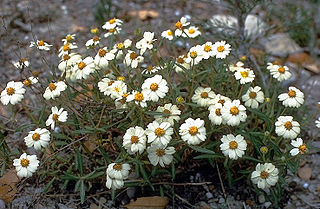
Melampodium is a genus of flowering plants in the sunflower family.

Maianthemum includes the former genus Smilacina and is a genus of perennial herbaceous flowering plants with fleshy, persistent rhizomes. It is widespread across much of North America, Europe and Asia, and may be terrestrial, aquatic or epiphytic. It is characterized by simple, unbranched stems that are upright, leaning or hanging down and have 2–17 foliage leaves. Leaves are simple and may clasp the stem or be short-petiolate. The inflorescence is terminal and either a panicle or a raceme with few to many pedicelate flowers. Most species have 6 tepals and 6 stamens; a few have parts in 4s. Tepals are distinct in most species and all of similar size. Flowers are spreading, cup-shaped or bell-shaped and usually white, but lavender to red or green in some species. Fruits are rounded to lobed berries containing few to several seeds.

Bouteloua is a genus of plants in the grass family. Members of the genus are commonly known as grama grass.

Trixis is a genus of shrubs in the family Asteraceae, native to North and South America including the West Indies.

Thymophylla is a genus of perennial flowering plants in the tribe Tageteae within the family Asteraceae. Pricklyleaf is a common name for plants in this genus.

Flaveria is a genus of plants in the family Asteraceae. They are sometimes called yellowtops. Some are annual or perennial herbs and some are shrubs. They bear yellow flowers in heads, with zero, one, or two ray florets in each head. These plants are found in the Americas, Asia, Africa, and Australia.

Callisia is a genus of flowering plants in the spiderwort family, Commelinaceae. Members of the genus are commonly known as roselings. It is native to the Western Hemisphere from the southern United States to Argentina. The generic name is derived from the Greek word κάλλος (kallos), meaning "beauty."

Hilaria is a genus of North American plants in the grass family. Members of the genus are commonly known as curly mesquite. They are found in the Southwestern United States, Mexico, and Guatemala.

Tridax is a genus of flowering plants in the family Asteraceae.
Florestina is a genus of flowering plants in the sunflower family, native to Texas, Mexico, and Central America.
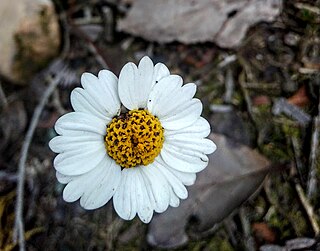
Sabazia is a genus of Colombian and Mesoamerican plants in the tribe Millerieae within the family Asteraceae.
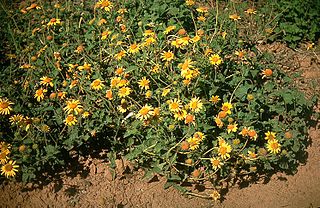
Simsia is a genus of flowering plants in the tribe Heliantheae within the family Asteraceae. It includes annuals, herbaceous perennials, and shrubs. They range from the western United States south through Central and South America to Argentina, with the center of diversity occurring in Mexico. The genus is named for British physician and botanist John Sims (1749–1831). Although some species are relatively rare, others have become common weeds that line the roadsides and fields of Mexico, often forming dense stands mixed with Tithonia and other Asteraceae. Some species are known by the common name bushsunflower.
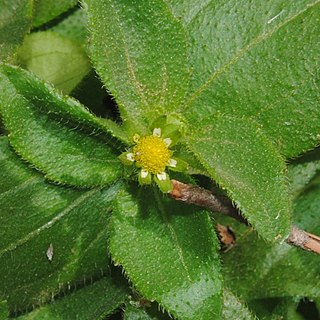
Jaegeria is a genus of flowering plants in the family Asteraceae found from Mexico to South America. The name commemorates Georg Friedrich von Jaeger.

Perymenium is a genus of South American and Mesoamerican plants in the tribe Heliantheae within the family Asteraceae.
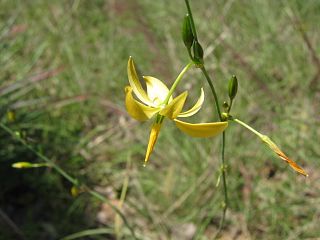
Echeandia is a genus of New World plants in the century plant subfamily within the asparagus family.

Tinantia is a genus of plants in the Commelinaceae, first described in 1839. They are commonly called widow's tears or false dayflowers due to their resemblance of the closely related true dayflowers of the genus Commelina. Tinantia is native to North and South America from Texas + Hispaniola to Argentina, with a center of diversity from Mexico to Nicaragua. Tinantia pringlei, an alpine native of Mexico, is grown as an ornamental in temperate areas and is also a common greenhouse weed.

Crusea is a genus of angiosperms in the family Rubiaceae. The genus is found in the south-western United States, Mexico, and Central America. A few species are naturalized in Cuba and Puerto Rico.
Thyrsanthemum is a genus of plants in the Commelinaceae, first described in 1946. The entire genus is endemic to Mexico.

















